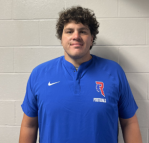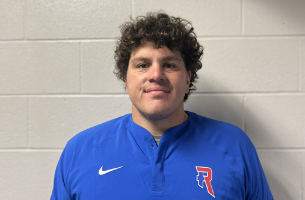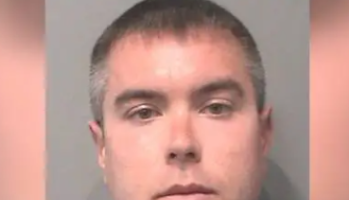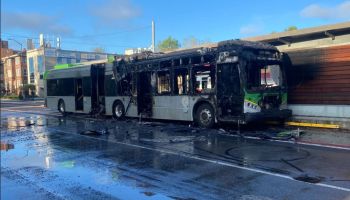CHRISTCHURCH, New Zealand. — A far-right terrorist who killed 51 Muslim worshipers in New Zealand’s worst mass shooting in modern history will spend the rest of his life in prison with no chance of parole, the first time such a sentence has been handed down in the country’s courts.
Brenton Tarrant, 29, was sentenced Thursday after pleading guilty earlier this year to murdering 51 men, women, and children at two Christchurch mosques on March 15, 2019. The youngest victim was just three years old.
The Australian citizen also pleaded guilty to 40 counts of attempted murder and one charge of terrorism — he is the first person in New Zealand to be convicted of that crime.
Tarrant represented himself at the hearing and chose not to address the court, but instructed lawyer Pip Hall to speak on his behalf. “Mr Tarrant does not oppose the application. He should be sentenced to life in prison without parole.”
Justice Cameron Mander turned to the convicted killer and asked him if he wanted to speak. “No. Thank you,” Tarrant quietly replied.
Justice Mander read the names of every victim, both the injured and the dead, telling Tarrant about the lives he destroyed or cut short. “You showed no mercy. It was brutal and beyond callous — your actions were inhumane,” Mander told Tarrant.
“As far as I am able to gauge you are empty of any empathy to your victims,” Mander added. “You have said you were in a poisoned emotional state at the time, and terribly unhappy. You felt ostracized by society and wanted to damage society as revenge.”
Thursday’s sentence came at the end of a harrowing four-day hearing at Christchurch High Court where 91 survivors and relatives of the victims described the pain Tarrant had inflicted on the Muslim community.
Tarrant sat quietly, showing little-to-no emotion as they expressed fury, revulsion, forgiveness, and sadness.
After his sentencing, Prime Minister Jacinda Ardern said nothing would take away the pain of the attack.
“Today I hope is the last where we have any cause to hear or utter the name of the terrorist behind it,” said Ardern, who has made a point of not saying extremist’s name. “His deserves to be a lifetime of complete and utter silence.”
New Zealand abolished the death penalty for murder in 1961, and judges cannot impose cumulative sentences for crimes that relate to the same incident, unlike in the United States. Murder carries a mandatory life sentence, although the sentencing judge specifies how long they need to spend in jail before they are eligible to apply for parole.
What happened on March 15, 2019
The Christchurch attack was unprecedented in New Zealand, a country of only five million people where gun killings are uncommon. The massacre prompted New Zealand to ban military-style semi-automatic weapons. The public rallied in support of the country’s 60,000-strong Muslim community.
During the sentencing hearing, Crown prosecutor Barnaby Hawes detailed the chilling timeline of the attack.
On March 15, Tarrant made the 4.5-hour drive from the South Island city of Dunedin to Christchurch, around 360 km (220 miles) away. At about 1.30 p.m. that day, as worshipers were taking part in Friday prayers, Tarrant sent a message to his family outlining his plans. He then activated a GoPro on his vest and began live streaming to Facebook, Hawes told the court.
Tarrant drove to Al Noor Mosque in an inner-city Christchurch suburb, where he killed 44 people and wounded 35. “He fired methodically into the bodies and heads of anyone still showing signs of life,” Hawkes said.
Tarrant then sped 6 km (4 miles) to the Linwood Islamic Centre where he killed seven people and injured another five.
As he ran back to his car for more ammunition, he was chased by Abdul Aziz Wahabazadah who threw an EFTPOS machine at the gunman’s head. Wahabazadah also picked up a rifle Tarrant had dropped and threw it at Tarrant’s car, shattering a glass panel. “You should thank God on that day I didn’t catch you. It would have been a different story,” Wahabazadah told Tarrant in court Wednesday.
After Wahabazadah gave his victim impact statement, Justice Mander told him: “I have seen the video and I want to acknowledge your courage.” Applause broke out in the public gallery.
Tarrant was on his way to the third scene in Ashburton — a town around an hour’s drive from Christchurch — but was stopped by police who rammed his car and arrested him without resistance.
During the hearing, the court was told that Tarrant began planning the massacre in September 2017 — 18 months before the attack. He got a firearms license and began stockpiling weapons and ammunition. He also took drone vision of the Al Noor Mosque, researched the mosque plans, and noted details about prayer times and important days in the Islamic calendar.
In an interview with police, Tarrant admitted “going into both mosques to kill as many people as he could.” Hawes told the court that Tarrant planned to burn the mosques to the ground and said he “wished he had done so.”
Hawes said Tarrant intended to instill fear into those he described as “invaders,” including the Muslim population and, more broadly, non-European immigrants.












